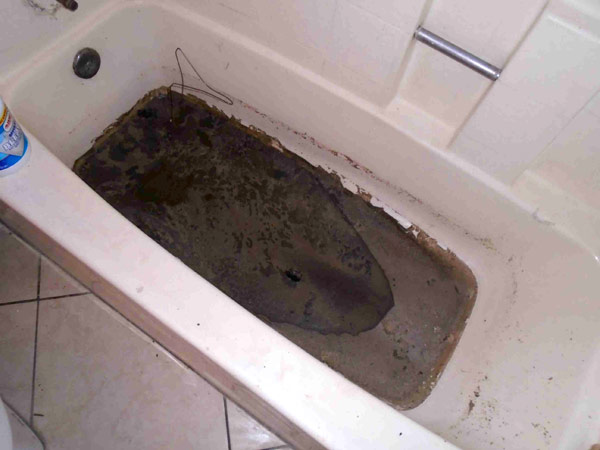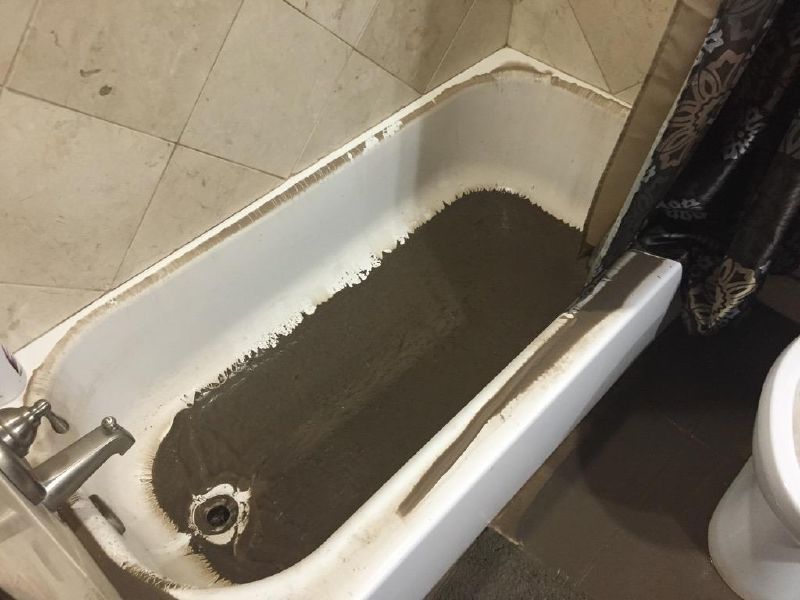Examining Why Sewage Comes Up Through the Bathtub
Examining Why Sewage Comes Up Through the Bathtub
Blog Article
They are making a number of great points relating to Why is Sewage Backing Up Into My Bathtub? overall in this great article following next.

Sewer back-up in the bathtub can be a distressing and unsanitary issue for any kind of homeowner. Not just is it bothersome, but it also presents major health risks and suggests underlying problems with the plumbing system. Understanding why sewer is coming up via the bath tub is critical for taking proper action to attend to the issue effectively.
Intro to the Issue
Common Factors for Sewage Back-up
Blockages in the Sewer Line
One of the most usual root causes of sewer back-up is a blockage in the drain line. This can occur due to the buildup of particles, oil, or foreign objects in the pipelines, preventing appropriate circulation and triggering sewage to back up right into your bathtub.
Tree Root Invasion
Tree origins looking for dampness and nutrients can infiltrate drain lines through tiny cracks or joints. Gradually, these roots can grow and broaden, triggering substantial damage to the pipelines and resulting in sewage back-up issues.
Recognizing the Trouble
When sewage draws back up right into the tub, it's a clear indicator of an issue with the water drainage system. The wastewater that should be streaming away from your home is instead discovering its back into your home, which can bring about significant damage and carcinogen.
Prospective Reasons
Numerous aspects can add to sewage backup in the bathtub. From clogs in the drain line to issues with the plumbing facilities, recognizing the root cause is necessary for discovering a service.
Aging Framework
Older homes may have outdated plumbing systems that are much more prone to deterioration, cracks, and wear and tear. As pipes age, they become much more susceptible to leaks and clogs, raising the chance of sewer backup events.
Heavy Rainfall or Flooding
During periods of heavy rainfall or flooding, the drain system might become overloaded with excess water, triggering backups and overflows. This can lead to sewage backing up into tubs and various other fixtures inside the home.
Indications of Sewer Back-up
Foul Odors
Unpleasant smells rising from drains pipes or fixtures, especially in the bathroom, might suggest sewer backup problems. These odors are often strong and consistent, indicating an issue that calls for prompt interest.
Slow Draining Fixtures
Bath tubs, sinks, and toilets that drain pipes slowly or not at all could be experiencing sewage backup. If multiple fixtures are influenced all at once, it's likely that the issue originates from a common point, such as the main sewage system line.
Gurgling Sounds
Odd gurgling or gurgling noises coming from drains pipes when water is running in other places in your house are indicative of air caught in the plumbing system. This air accumulation can result from sewer backup and ought to be checked out promptly.
Health Dangers Related To Sewer Back-up
Contamination of Water Supply
Sewer backup can contaminate the supply of water in your home, posturing a severe wellness risk to you and your household. Direct exposure to polluted water can lead to intestinal issues, skin infections, and various other health problems.
Mold Growth
Dampness from sewer backup can develop perfect conditions for mold growth in your house. Mold and mildew spores can aggravate respiratory system problems and cause allergies in sensitive people, making timely cleanup necessary.
Spread of Condition
Sewage consists of damaging bacteria, infections, and bloodsuckers that can trigger a range of conditions, including hepatitis, cholera, and gastroenteritis. Entering into contact with sewer or contaminated surface areas puts you in jeopardy of infection.
Cleaning Up After Sewage Backup
Sanitation Procedures
Completely disinfect and sterilize affected areas after sewage backup to remove dangerous bacteria and protect against mold and mildew development. Use proper cleansing items and safety gear to make sure safe and efficient cleaning.
Remediation of Influenced Areas
Repair any type of damages to floor covering, wall surfaces, or fixtures triggered by sewer back-up. Relying on the extent of the damage, you may need to replace carpeting, drywall, or various other materials to restore your home to its pre-loss condition.
Immediate Actions to Take
Switching Off Water System
In the event of sewage back-up, it's necessary to shut off the supply of water to avoid additional contamination and damages. Situate the primary water shutoff valve in your house and shut it off till the problem can be settled.
Contacting an Expert Plumber
Handling sewage back-up is not a DIY job. Contact an accredited plumber with experience in dealing with sewage-related concerns to examine the scenario and perform necessary repairs or cleanups.
Staying Clear Of Contact with Contaminated Water
Up until the sewer backup is resolved, prevent contact with infected water to avoid the spread of germs and virus. Use safety gear if you should be in the damaged area and clean your hands extensively afterward.
Preventive Measures
Regular Maintenance of Sewer Lines
Schedule normal examinations and maintenance of your sewage system lines to recognize and deal with prospective concerns prior to they rise right into significant troubles. This can consist of cleaning particles, inspecting for tree origin invasion, and fixing any type of damaged pipelines.
Mounting Backwater Shutoffs
Consider mounting bayou valves in your plumbing system to avoid sewer from flowing back right into your home throughout durations of heavy rainfall or flooding. These shutoffs automatically close when water draws back up, safeguarding your property from contamination.
Proper Disposal of House Waste
Stay clear of purging anything apart from toilet tissue and human waste down the bathroom to avoid blockages and obstructions in the sewer line. Dispose of oil, oil, and other family chemicals appropriately to lessen the risk of plumbing troubles.
Why Is Water Backing Up in My Bathtub When I Flush My Toilet?
What to do about a sewer line clog
First, don’t bother with plunging. No amount of plunging will dislodge the clog in a sewer line. The clog is too far away. Plungers are for clogs in the toilet itself, not the sewer line. Plus, the most likely causes of a sewer clog are:
Tree roots Flushed toys or feminine products Grease buildup Those items don’t move easily. And in the case of tree roots, the roots need to be cut out of the pipe and the pipe will need to be repaired.
You’ll need a closet auger. A closet auger is a type of plumber’s snake with a protective cover to keep from scratching the delicate porcelain toilet. If the clog is further down, you may need to remove the toilet or use one of your cleanouts to get to the clog.
We also recommend doing a video inspection of the drain to ensure that the cause of the clog has been completely removed. Otherwise, you could have the same problem again in a few days or weeks.
https://mspplumbingheatingair.com/blog/why-is-water-backing-up-in-my-bathtub-when-i-flush-my-toilet

Hopefully you liked our topic about Why sewage is coming up through your bathtub. Thank you so much for finding the time to read through our article post. Be sure to set aside a second to distribute this blog entry if you liked it. Thanks for your time. Revisit us soon.
Details Here
Report this page